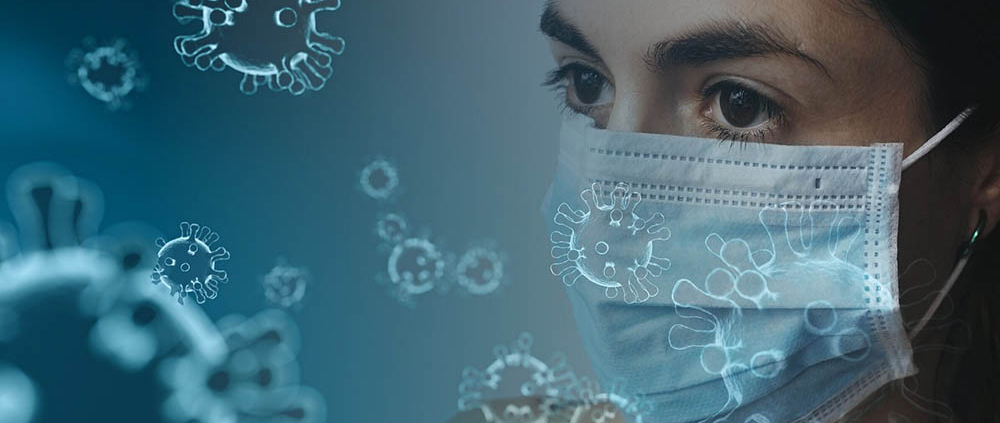XP and Covid 19
Dear Patients and Family members
Thank you for your participation in our research at the National Institutes of Health on the DNA repair conditions xeroderma pigmentosum, trichothiodystrophy and Cockayne syndrome. During these difficult times we would like to provide you with some information to help you and your families stay healthy.
COVID-19 is a new disease caused by the novel coronavirus infecting humans, and there is much that is still not known or understood about it. Currently, physical distancing, frequent hand washing, use of hand sanitizers and wearing face coverings such as tightly woven cloth face masks or even UV blocking face shields are the best ways to prevent spreading the virus. With physical distancing, staying 6 feet apart, these measures help from contracting the infection.
We do know that people with neurological problems such as XP neurologic disease and Cockayne syndrome can experience a temporary worsening in their symptoms when they are suffering from any infections that cause flu-like symptoms or pneumonia. Therefore, we might expect if XP patients with neurological problems or Cockayne syndrome patients develop symptoms from the coronavirus infection, they may get worse while the respiratory symptoms or pneumonia persist. TTD children, who often have immune problems, may be more vulnerable to the respiratory complications of COVID 19 and physical distancing is very important for them. The World Health Organization has also advised on the importance of treating Vitamin D insufficiency because of increased time indoors. We would recommend all of our patients continue on supplementation with oral Vitamin D.
We understand that social isolation, reduction in physical activity, unpredictability and changes in routine can all contribute to increasing stress. People living with DNA repair conditions often have some aspects of physical distancing. However, missing out on school activities, therapies or being required to attend school classes and work from home can feel isolating.
Several types of light bulbs including unshielded florescent and halogen bulbs emit higher levels of UVR (ultraviolet radiation) than is safe for people with XP and photosensitive TTD. These are often found in areas like cafeterias and gyms. Recently, high UVR (UVC bulbs) emitting light sources have been proposed for use in public areas as a means to protect from the coronavirus. It is important for people with XP and photosensitive TTD to be aware of all of these light sources in the environment. If necessary, re-check public areas with a UV meter to assess if it is safe.
We are thinking of you during this difficult time and are here for you if questions or concerns arise. Please contact us at the email and phone numbers listed below.
Phone and Email:
Dr. Kenneth Kraemer: 240-760-6139 kraemerk@nih.gov
Dr. John DiGiovanna: 240-760-6138 jdigiovanna@nih.gov
Debby Tamura RN: 240-760-7355 tamurad@mail.nih.gov
COVID-19 is an emerging, rapidly evolving situation.
• What people with cancer should know: https://www.cancer.gov/coronavirus
• Get the latest public health information from CDC: https://www.coronavirus.gov
• Get the latest research information from NIH: https://www.nih.gov/coronavirus
As part of the NIH Intramural Program, CCR has shifted all non-mission-critical laboratory operations to a maintenance phase in order to promote physical distancing and diminished transmission risk of COVID-19. Effective Monday, March 23, 2020, only mission-critical functions within NIH research laboratories will be supported.
Below are some websites that provide updated information on COVID 19 and living with the social consequences of the infection.
https://faq.coronavirus.gov/ – information from the Centers of Disease Control and Prevention
https://directorsblog.nih.gov/2020/04/07/dealing-with-stress-anxiety-and-grief-during-covid-19/ – a wonderful conversation between NIH Director Dr Francis Collins and Dr Joshua Gordon director of the National Institute of Mental Health (NIMH) on dealing with stress, grief and anxiety during COVID 19.
https://www.nimh.nih.gov/news/science-news/2020/supporting-mental-health-during-the-covid- 19-pandemic.shtml – link to the NIMH website section addressing some of the emotional issues occurring while living with COVID 19 pandemic. There are links to other sites for additional information on dealing with stress.
Below are some websites pertaining to services for children with disabilities.
https://www.americanbar.org/groups/litigation/committees/childrens-rights/articles/2020/are- special-education-services-required-in-the-time-of-covid19/ – Link to the American Bar Association statement on special education services and COVID 19. Contain ssuggestions for parents of special needs children who are experiencing disruption of services.
https://www2.ed.gov/about/offices/list/ocr/frontpage/faq/rr/policyguidance/Supple%20Fact%20Sheet%203.21.20%20FINAL.pdf. This is a statement from the Federal Department of Education describing the responsibilities of local educational districts to children with special needs.
https://www.parentcenterhub.org/ Online center for parents who have children with disabilities. Provides information on COVID 19 and special education needs.



